
Natsume Sōseki, pen name Sōseki, born Natsume Kin'nosuke, was a Japanese novelist. He is best known for his novels Kokoro, Botchan, I Am a Cat, Kusamakura and his unfinished work Light and Darkness. He was also a scholar of British literature and writer of haiku, kanshi poetry and fairy tales.
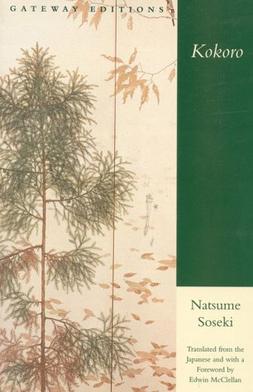
Kokoro is a 1914 Japanese novel by Natsume Sōseki, and the final part of a trilogy starting with To the Spring Equinox and Beyond and followed by The Wayfarer. Set in the Meiji era, the novel tells of the acquaintance between a young man and an older man called "Sensei", who holds a secret from his past regarding the death of a friend.
John Weil Nathan is an American translator, writer, scholar, filmmaker, and Japanologist. His translations from Japanese into English include the works of Yukio Mishima, Kenzaburō Ōe, Kōbō Abe, and Natsume Sōseki. Nathan is also an Emmy Award-winning producer, writer and director of several films about Japanese culture and society and American business. He is Professor Emeritus of Japanese Cultural Studies at the University of California, Santa Barbara.

Masao Kume was a Japanese popular playwright, novelist and haiku poet active during the late Taishō and early Shōwa periods of Japan. His wife and the wife of Nagai Tatsuo were sisters, making them brothers-in-law.

Takaaki Yoshimoto, also known as Ryūmei Yoshimoto, was a Japanese poet, philosopher, and literary critic. As a philosopher, he is remembered as a founding figure in the emergence of the New Left in Japan, and as a critic, he was at the forefront of a movement to force writers to confront their responsibility as wartime collaborators.
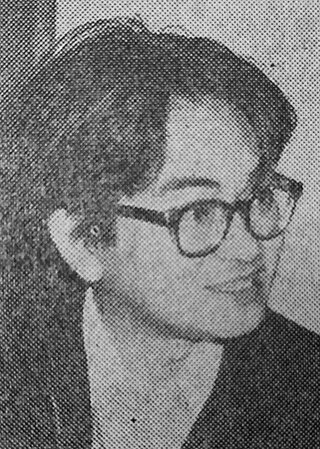
Shunsuke Tsurumi was a Japanese philosopher, historian, and sociologist.

Edwin McClellan was a British Japanologist, teacher, writer, translator and interpreter of Japanese literature and culture.
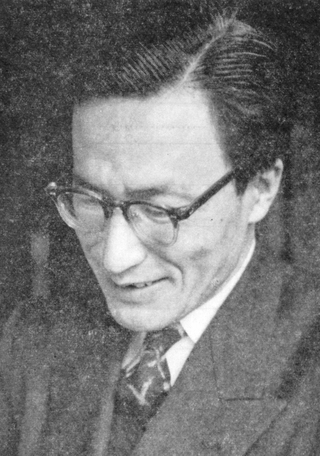
Masao Maruyama was a leading Japanese political scientist and political theorist. His expertise lay in the history of Japanese political thought, to which he made major contributions.

Masajirō Kojima was a Japanese novelist active in Shōwa period Japan.

Morita Yonematsu, known under pen name Morita Sōhei, was a novelist and translator of Western literature active during the late Meiji, Taishō and early Shōwa periods of Japan.
Chūō Kōron is a monthly Japanese literary magazine, first established during the Meiji period and continuing to this day. It is published by its namesake-bearing Chūōkōron Shinsha. The headquarters is in Tokyo.
Kairo-kō: A Dirge is a 1905 novel by the Japanese author Natsume Sōseki. The earliest, and only major, prose treatment of the Arthurian legend in Japanese, it chronicles the adulterous love triangle between Lancelot, Guinevere, and Elaine of Astolat.

Grass on the Wayside is a 1915 Japanese autobiographical novel by Sōseki Natsume. It is his only autobiographical work of fiction, and his last completed work. Together with Kokoro (1914), Grass on the Wayside is often cited as Natsume's major literary effort.
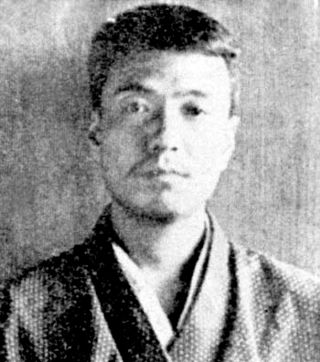
Kyoshi Takahama was a Japanese poet active during the Shōwa period of Japan. His real name was Takahama Kiyoshi (高浜清); Kyoshi was a pen name given to him by his mentor, Masaoka Shiki.

Ichirō Kōno was a Japanese politician during the postwar period who served as Deputy Prime Minister and a member of the National Diet. As Deputy Prime Minister, he was in charge of the 1964 Tokyo Olympics. In the 1950s and 1960s, he was the head of the powerful "Kōno Faction" within the ruling Liberal Democratic Party. Kōno aspired to become prime minister, but although he held a large number of important party and cabinet positions, reflecting his power and influence, he was not able to rise to the premiership before his death in 1965.
Hiroshi Katsuragawa was a Japanese artist closely associated with the postwar avant-garde art movement in Japan. His artworks were featured prominently in the 2010 documentary film ANPO: Art X War by American documentary filmmaker Linda Hoaglund.

On 12 October 1960, Inejirō Asanuma, chairman of the Japan Socialist Party, was assassinated at Hibiya Public Hall in Tokyo. During a televised debate, 17-year-old right-wing ultranationalist Otoya Yamaguchi charged onto the stage and fatally stabbed Asanuma with a wakizashi, a type of traditional short sword. Yamaguchi committed suicide while in custody.
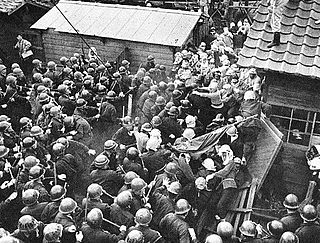
The Miike Struggle was a year-long struggle in Japan in 1960 between the organized labor movement, backed by a variety of left wing groups, and big business organizations, backed by the Japanese right, centering around a lengthy labor dispute at the Mitsui Miike Coal Mine on the west coast of Kyushu in southern Japan. Occurring at the climax of a long series of escalating strikes and other militant labor actions in 1950s Japan, the Miike Struggle was the largest labor-management dispute in Japanese history. Ultimately, the labor movement in Japan was defeated at Miike, dealing a significant blow to its prospects going forward.
In Japanese literature, the Bundan is a term used to refer to a "system" of literary cliques and coteries that allow small in-groups of established authors, critics, and publishers to selectively advance the careers of favored protégés by controlling access to publication in prestigious literary magazines and dominating the selection committees for prestigious literary prizes such as the Akutagawa Prize. The Bundan has also been described as an "unofficial literary guild."
Ken Hirano was the pen name of a prominent Japanese literary critic and longtime professor of literature at Meiji University. His real name was Akira Hirano.















